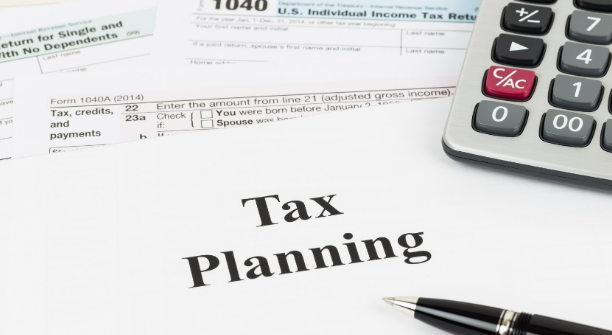Retirement planning is a crucial part of financial planning, and one area that should be considered is annuities. With the changing landscape of tax laws, it’s essential to become aware of strategies to maximize the savings in your retirement accounts while minimizing taxes paid on them.
In this article, we will look at how different kinds of annuities work and some specific actions that could help you lower your tax bill come April 15th each year. Knowing the ins and outs of proper annuity usage can enable you to ensure that your hard-earned money is not needlessly taxed away—investing in an annuity now can lead to substantial long-term savings down the road.
Understand the Basics of Annuities and Tax Planning for Retirement
Are you nearing retirement and concerned about how your savings will hold up? Annuities may be an excellent option for those looking for safe investments for seniors. These are contracts with insurance companies designed to provide regular income in exchange for a lump sum. But how do taxes come into play? Planning is critical when it comes to taxes and retirement. Some annuities offer tax-deferred growth, meaning you will only pay taxes once you receive payments.
Others offer tax-free withdrawals as long as you follow specific guidelines. Understanding the basics of annuities and tax planning for retirement can help you make informed decisions and ease your worries about financial security in your senior years. A tax-efficient annuity could be the perfect option if you’re looking for safe investments for seniors.
Identify Your Goals and Strategies for Retirement Savings
Before deciding what kind of annuity to invest in, it’s essential to identify your retirement goals and strategies. Are you looking for a steady stream of income throughout retirement? Or do you want to leave a legacy for your loved ones? These factors can impact the type of annuity that best fits your needs.
A qualified longevity annuity contract (QLAC) may be a good option for those interested in maximizing their retirement savings while minimizing taxes. These allow for tax-deferred growth and delay required minimum distributions (RMDs) until age 85, giving you more control over when to take taxable withdrawals. Another strategy to consider is using a part of your retirement savings to purchase an immediate annuity, which can provide a steady stream of income for life while also lowering your taxable income.
Assess Your Retirement Investment Options to Maximize Returns
When planning for retirement, it’s crucial to assess your investment options and determine which will provide the best returns. Annuities can be a valuable part of your portfolio, but you should also consider other tax-advantaged accounts, such as traditional IRAs or Roth IRAs.
One strategy is to use a combination of annuities and other retirement accounts to create a tax-efficient income stream. It can help you avoid paying higher taxes in retirement and make your savings last longer. Additionally, considering the timing of when to take withdrawals from each account can also impact your overall tax burden.
Determine the Best Annuity Plan that Fits Your Needs
Various annuity options are available, and it’s essential to determine which one best fits your needs. Some factors to consider include the amount of money you have available to invest, your life expectancy, and your risk tolerance.
A fixed annuity may be the best option for those looking for a guaranteed income stream throughout retirement. These offer a stable interest rate and protection from market volatility. On the other hand, a variable annuity allows for potential growth through investment in mutual funds but carries more risk. It’s crucial to weigh these factors and choose an annuity that aligns with your retirement goals.
Consider Potential Tax Advantages of Annuities in Retirement Planning
One of the significant benefits of annuities is their potential tax advantages in retirement planning. As mentioned earlier, some annuities offer tax-deferred growth or tax-free withdrawals, depending on the type of annuity and how it’s structured.
Another advantage to consider is the ability to use an annuity to lower your taxable income in retirement. By receiving a steady stream of income from an annuity, you may be able to stay in a lower tax bracket and pay less in taxes overall. It can make a significant impact on your retirement savings.
Explore other Investment Strategies to Supplement Your Retirement Savings
While annuities can be effective in maximizing your retirement savings and minimizing taxes, it’s always wise to explore other investment strategies. Diversifying your portfolio with a mix of stocks, bonds, and real estate can provide additional sources of income in retirement.
Furthermore, considering tax-efficient investments such as municipal bonds or tax-free exchange-traded funds (ETFs) can also help minimize taxes paid on your investments. It’s essential to work with a financial advisor to determine the best mix of investment strategies for your individual retirement goals and circumstances.
Conclusion
In conclusion, while tax planning may be a more exciting topic, it is essential when maximizing your retirement savings. Annuities can play a valuable role in this process, offering potential tax advantages and a guaranteed income stream for life.
By understanding the basics of annuities, identifying your goals and strategies for retirement savings, assessing all investment options, choosing the best annuity plan, and exploring other investment strategies, you can create a comprehensive tax-efficient retirement plan that gives you peace of mind in your golden years.




More Stories
Saving For Retirement – Smart Strategies For Every Age Group
Future-Proofing Your Finances: Steps and Strategies
A Brief About Exante’s Financial Instruments